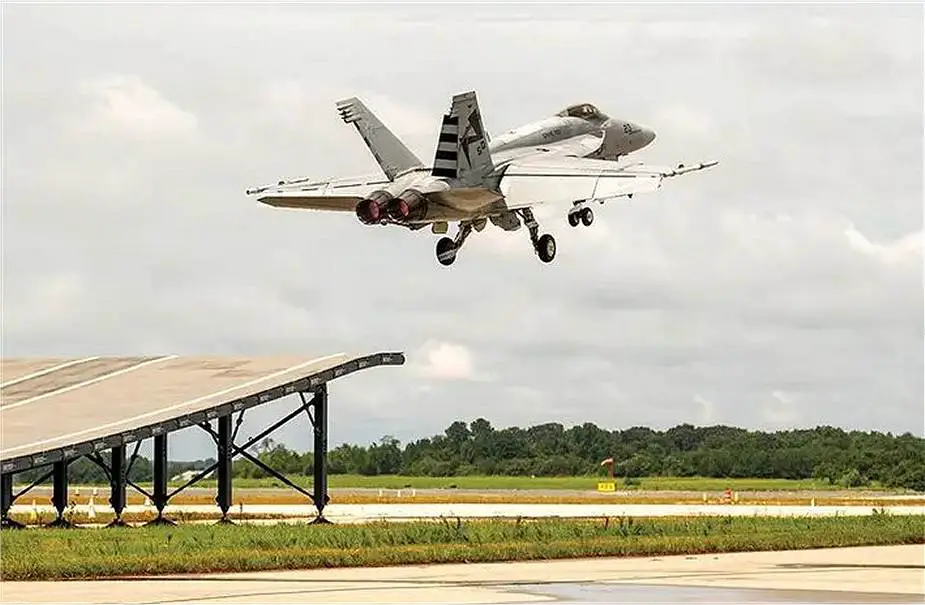According to a picture published to the Livefist Twitter account on December 16, 2020, ski jump trial tests were conducted on August 2020 with U.S. Navy F/A-18, to prove the capability of the naval fighter aircraft to be used onboard INS Vikramaditya and new local-made IAC-1 Vikrant Indian Navy aircraft carrier.
Follow Navy Recognition on Google News at this link
 US Navy F/A-18 conducts ski jump trial tests to prove the capability of the naval fighter aircraft to be used onboard Indian Navy aircraft carrier. (Picture source Livefist Twitter account)
US Navy F/A-18 conducts ski jump trial tests to prove the capability of the naval fighter aircraft to be used onboard Indian Navy aircraft carrier. (Picture source Livefist Twitter account)
In May 2020, it was announced that Boeing was planning to demonstrate the compatibility of its F-18 Super Hornet to take off and land from the decks of Indian Navy’s aircraft carriers which use the ski-jump take-off system. The American Company had offered to demonstrate the Jet to Indian officials from a land-based ski jump facility at Naval Air Station Patuxent River in Maryland.
According to information published on October 2020, the United States has offered its F-18 naval fighter aircraft for the Indian Navy's requirements of combat jets for its aircraft carriers.
The Indian Navy had a few years ago expressed interest in the acquisition of 57 naval fighter aircraft for operations from its aircraft carriers including the present INS Vikramaditya and its local-made Aircraft Carrier IAC-1.
According to information published on the Boeing India website, American Company offers its F/A-18 Super Hornet Block III for the Indian Navy. The F/A-18 Block III Super Hornet is the newest highly capable, affordable, and available tactical aircraft in U.S. Navy inventory. The Super Hornet is the backbone of the U.S. Navy carrier air wing now and for decades to come.
In June 2020, U.S. Navy took delivery of the first Block III F/A-18 Super Hornet. Like every aircraft slated for the fleet, the Boeing-produced two-seat (F287) and single-seat (E323) models will undergo comprehensive testing.
The new F/A-18 Super Hornet Block III integrates new capabilities as an Advanced Cockpit System that includes a new 10x19 inch touch screen providing the pilot with the capability to see, track and target multiple long-range targets generated by the common tactical picture.
The Super Hornet Block III is fitted with a new 9,000+ hour life airframe to provide 3,000 additional hours by incorporating design changes into production aircraft based on lessons learned from the Service Life Analysis Program.
Conformal fuel tanks will be integrated into the F/A-18 Block III offering long-range with low-drag. The shoulder-mounted tanks can carry 3,500 pounds of fuel and reduce drag, allowing the aircraft to operate longer, go faster and/or carry more weight.
The F/A-18 Super Hornet Block III has new long-range detection capabilities thanks to the use of a Block II Infrared Search and Track (IRST) system that can detect threats without having to depend on a radar which may jam, generating a multi-ship, common tactical picture at long range, allowing the Super Hornet to operate as a smart sensor node on the network.



